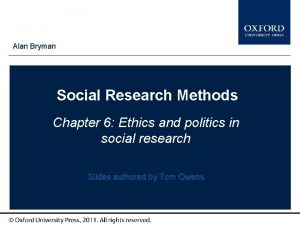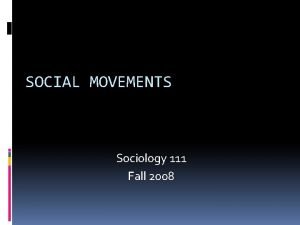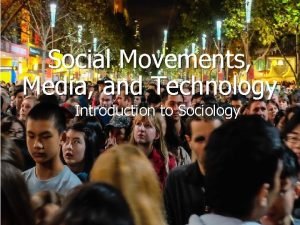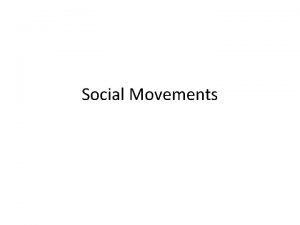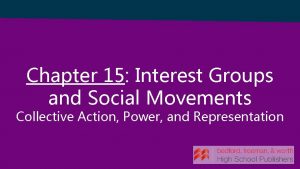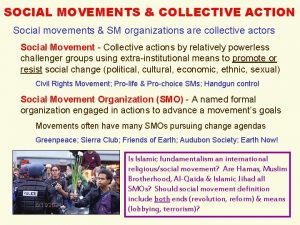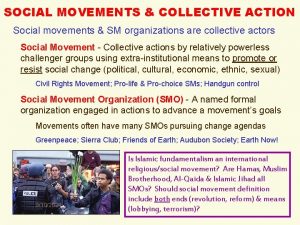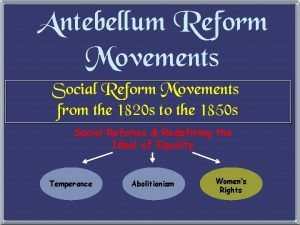Politics and Social Movements in the th 20







- Slides: 7

Politics and Social Movements in the th 20 Century Ottoman Empire in the 20 th Century

• Week 9: Ottoman Empire in the 20 th Century Erik Zürcher, “The Young Turk Movement, ” “Ideological Debates, ” “The Armenian Question, ” p. 82 -87, 126 -132, 112 -117.

• First constitutional period, first parliament composed of 119 members – 1876 -1878 • February 1878 – Abdulhamit II closed the parliament. • Second constitutional period: 1908 • 1909 – March 31 Revolt • 1909 -1913

• Established in military medical student by four students in 1889 (İttihad-ı Osmani Cemiyeti) • The new generations being trained in schools like the Mu lkiye and Harbiye (War Academy) continued to be attracted by the liberal and constitutional ideas as well as the Ottoman patriotism, of the Young Ottomans, whose books they read and discussed widely. • Leadership rivalry: Ahmet Rıza, Mizancı Murat, Prens Sabahattin • Sabahattin was unusual among the Young Turks in that he saw the engine for change and progress, not in the state, but in the individual, believing in minimal government and the power of free enterprise to regenerate the empire, while Ahmet Rıza was becoming more and more of an Ottoman nationalist. • Bahaettin Şakir, Dr. Nazım • A movement from the liberal ideas to Turkish nationalism + the elimination of the liberal wing of Prens Sabahattin Committee of Union and Progress

• Two constantly recurring themes: u the measure of Westernization needed or acceptable and u the question of what was to be the basis for identification with and loyalty to the future Ottoman state. • 3 ideologies of the last decades of the empire u (Pan-)Ottomanism - the official ideology of the revolution of 1908 u (Pan-)Islamism – second half of Abdülhamit era u (Pan-)Turkism • Emergence of Turkish nationalism as a last resort u Hüseyin Turan, Ahmet Ağaoğlu u Yusuf Akçura – Three u Ziya Gökalp – (Culture X Civiziliation) (Hars X Medeniyet) Ideological Debates

• They were ideologically eclectic with a shared set of attitudes rather than a common ideological programme. • Important elements in this set of attitudes were Ø Ø nationalism, a positivist belief in the value of objective scientific truth, a great (and somewhat naive) faith in the power of education, implicit belief in the role of the central state as the prime mover in society, Ø a certain activism, Ø a belief in change, in progress, which contrasted sharply with the cautious conservatism of the Hamidian era.

• The number of Armanians in the Empire: 1, 5 million (10% of the whole) • Relocation / Resettlement (Tehcir) • 3 controversies: 1. military necessity of the operation 2. Numbers (200. 000 – 800. 000 – 2. 000) 3. Intent Armenian Question -1915

